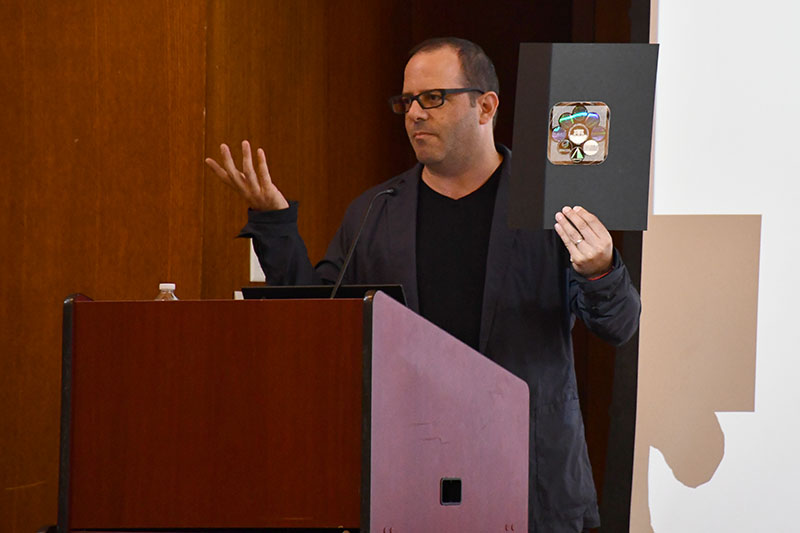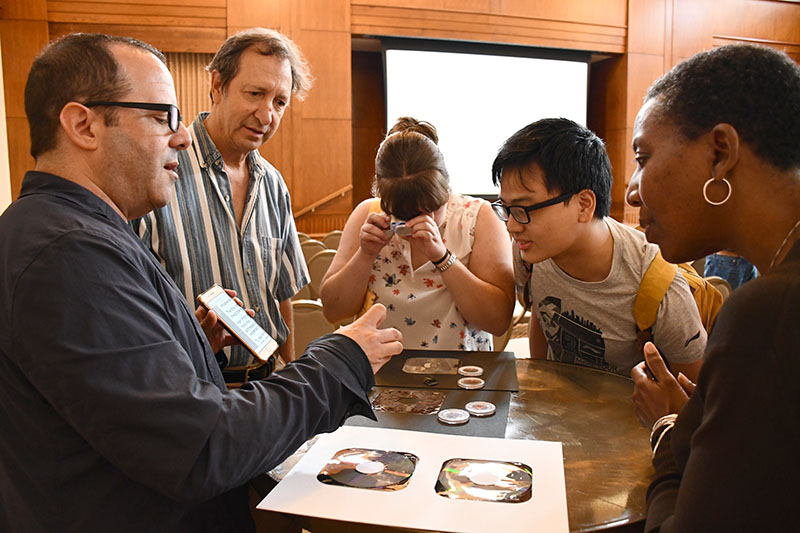“A Library where the Buildings and Stacks are the Planets and Moons”
Technology entrepreneur, innovator, and futurist Nova Spivack delivered the 2019 Lucille Kelling Henderson Lecture on Sept. 13, sharing stories and details of his quest to install durable archives around the globe and throughout the solar system to preserve the memory of humanity.
“The idea is to create a permanent record of all human knowledge that lasts for at least a billion years,” Spivack explained in his talk. “And it’s in so many places that somebody someday will find it, at least some of these will get through. We’re building the billion-year archive, which treats the solar system as a library where the buildings and stacks are the planets and moons.”
The UNC School of Information and Library Science (SILS) hosted Spivack’s lecture at the Carolina Club. A video of the talk is now available on the SILS YouTube channel.
Spivack began his presentation by showing a physical copy of the front of the Lunar Library, a 30-million-page trove of information that was delivered to the Moon’s surface earlier this year. The Library was part of the payload for SpaceIL’s Beresheet Lunar Lander. Although Beresheet crashed into the Moon, Spivack and others believe the Library survived intact.
The project is one of several efforts spearheaded by the Arch Mission Foundation (AMF), which Spivack co-founded. SILS Professor Paul Jones serves as an adviser to the foundation and helped curate the contents of the Lunar Library, which contains all of the ibiblio-hosted Project Gutenberg, all of the English language Wikipedia, and data for understanding over 5,000 languages.
Prior to their moonshot, the AMF successfully launched the Solar Library, the first permanent library in space, on February 6, 2018, as the secret payload of SpaceX’s Falcon Heavy test launch. In his talk, Spivack shared the story of how the quartz disk containing Isaac Asimov’s Foundation Trilogy came to reside in the glove compartment of Elon Musk’s cherry red Tesla Roadster, which is now orbiting the Sun.
To ensure their libraries can survive harsh conditions and endure for billions of years, the AMF is utilizing new technologies and materials, including quartz, nickel, and DNA. The Lunar Library was recorded on Nanofiche, nickel-based films that never degrade or need to be replaced.


